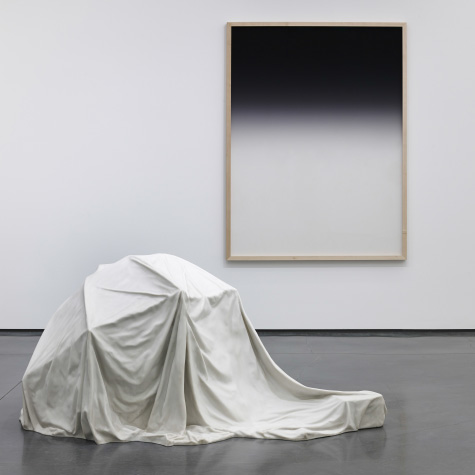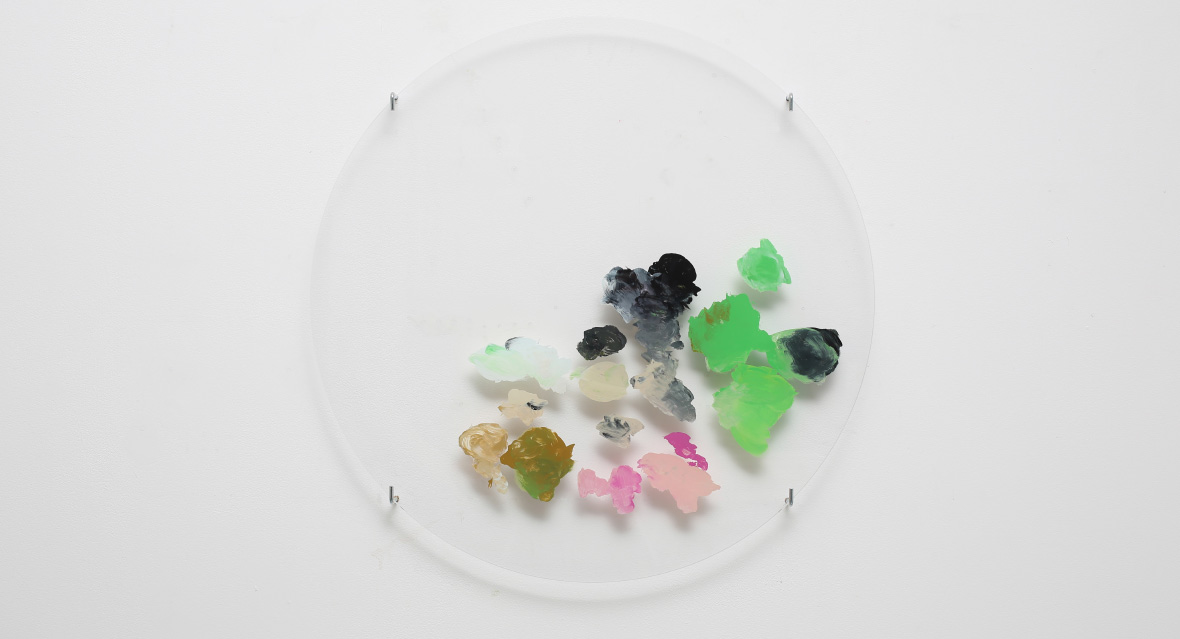
Problems One and Two: Contemporary Art and Architecture
Artist Ryan Gander recently purchased a former radio factory in the village of Melton, close to his home in Suffolk. Called, Solid House, Gander has worked with Matheson Whiteley Architects to convert the mid-80s brick and corrugated steel shed into a studio, gallery and workshops, along with accommodation for residency artists. Here Jonathan P. Watts speaks to Ryan Gander to find out more about the project.
Jonathan P. Watts: Solid House is a certain kind of ugly, expedient architecture, largely unloved. In your forthcoming book Fieldwork (Bedford Press, 2016) you recall how Jason Whiteley, of Matheson Whiteley, expressed amazement at the building at first sight and you thought he was taking the piss. What do you think are the affordances and limitations of the building?
Ryan Gander: It’s funny how buildings dictate what can, or cannot, happen in them. The thing about Solid House is that it’s highly functional: the underfloor heating works, it’s watertight, it has good life expectancy, and because it looks like shit you can cut holes in it and not worry. Appreciation is always historical, which is not |to say we won’t look at Gala Bingo Halls of the 1980s in 30 years and see them as post-modern masterpieces.
JPW: How important for you has it been to find the right architects? As an artist-client what is your relationship with them like?
RG: Matheson Whitely were formerly part of Herzog and de Meuron and worked on the The Tanks at Tate Modern. They did Stuart Shave’s gallery and Martino Gamper and Francis Upritchard’s house and studios. To be good in that discipline I think you need to resist a stylistic signature – this is the same for graphic designers and for artists. Matheson Whitely are adaptable free thinkers. That’s a sign of a good architect. The problem should come first and the solution should always be different because the situation and problem is always different. It seems to me that, say, Frank Gehry’s use of the same solution to multiple different problems is unintelligent, and illogical. If there are 20 problems how can ugly, shiny things that are difficult to build be the right solution in each instance? Matheson Whitely also did the treatment for Fairfield International and in each instance their treatments are massively different.

The day to day accumulation of hope, failure and ecstasy – Better a productive failure than an unproductive success (The Fairfield International), 2016 ©Ryan Gander. Courtesy the artist and Esther Schipper. Image Andrea Rossetti.
JPW: Tell me about your experience with Fairfield International.
RG: A few years ago, along with a friend who operates as a ‘fixer’, I began a project to open an art school and artist residency programme in the Suffolk market town of Saxmundham called Fairfield International. Matheson Whitely Architects were commissioned to repurpose a Victorian primary school and turn it into a venue that could annually accommodate 12 visiting international artists for six-month periods at a time. Part of the building needed to host a community cafe, and within the grounds, free to all, would be a playground, sculpture trail and amphitheatre. At a moment when university education fees began their inexorable climb in cost, Fairfield International, funded entirely by private patronage, would offer artists the resources and freedom to work without the need to earn money for the duration of the residency.
JPW: Why did Fairfield International not happen?
RG: The Conservative local authority were constantly creating obstacles. While we were negotiating these our survey identified an outcrop of Japanese knotweed on the site, which effectively made us uninsurable. We didn’t get the building, nor did we take up the pledges from patrons. But actually, I think Fairfield International has already happened. We expected it to take a concrete form but all along it was a state of permanent optimism, ambition and enthusiasm. Fairfield International doesn’t exist as it was planned, but like all great creative endeavours it was a matter of process. It metamorphosed into something that, for me is much greater.
JPW: A sensibility?
RG: I think so. What I learnt from the project is that you can let things happen organically, finally arriving at the same projected point, but in a totally different way. Really, the idea of Fairfield followed all the historical conventions of what we know art schools to be. It could easily have been absorbed by that, finally becoming a staid cliché. That’s not a desirable alternative. In the meantime, I’ve bought a building myself which will house an informal, sporadic, spastic form of art school, one with no schooling whatsoever. A school of hard knocks. Solid House – the name is a near anagram of its former name, Lindos, after the former owners’ favourite Greek town – will be my studio, workshop and gallery, and in the loft space the builders are currently constructing three apartments for residency artists.

I is…(iv), 2013. ©Ryan Gander. Courtesy the artist and Lisson Gallery. Image Tony Prikryl.
JPW: It’s as if the functionality of Solid House’s architecture makes it transparent. You cease to be aware of it as an edifice and it becomes a vast, porous space.
RG: My change in ethic has changed with the buildings. The Victorian building felt very formal: dot the i’s, cross the t’s, use letterhead paper, these are the benefactors, we are an institution, which becomes the machine of applying for Arts Council funding. Will we be a Tate partner? Will we become a National Portfolio Organisation? Will we become a clone of every art organisation in Britain? Solid House is ridiculous. It’s so free and open and uncool, and so not ironic. It embodies precisely the idea that the only things that matter are the actions that take place in it.
JPW: Has using your own funds freed you from delivering an art school that patrons, or to put it differently, ‘shareholders’, might have expected?
RG: Categorically. Problem number one: people graciously donate money but you’re making something that they want to see, and you can’t try out alternative models because you need to deliver something that is deemed a success. Problem number two: there’s a degree of guilt I feel about using other people’s money, so using my own money is a matter of agency and control. It means that you’re certainly answerable to fewer people and I recognise the tremendous privilege of this.

It’s got such good heart, 2012. ©Ryan Gander. Courtesy the artist.
JPW: If there’s a gallery in Solid House, aside from being a test centre for you, will it have a curated programme?
RG: Most of the time it’ll be for me to view and photograph my work. Once or twice a year there’ll be exhibitions. I also thought I’d organise summer symposia with artists present: have a big show, talks, screenings, and big dinners. People can camp. It’ll happen organically and sporadically, certainly not as formally as we initially thought Fairfield International should be. The great thing about Suffolk is that everyone wants to escape London to the countryside. Commercial galleries, however, need to be in the centre, not on the periphery. You need people to come and see work and people are really busy. The spectatorship of art through Instagram does not compete with the physical, emotive experience of travelling somewhere to be in a physical architecture. That is the main difference between the art studio and the gallery – people don’t have to go to the former, but they do the latter.

Elevator to Culturefield, 2016. ©Ryan Gander. Courtesy the artist and Esther Schipper. Image Andrea Rossetti
JPW: Would having residency artists around be an intrusion on your studio practice?
RG: The residency programme in my studio will be separate, self-sufficient, in another part of the building. Of course I sometimes need isolation but I can find that at home, at the kitchen table, or driving somewhere. For me a studio is a place where anything can happen. Alongside money, the greatest enabler of possibility is people. That’s what I would say is my main tool as an artist: interesting, intelligent, not necessarily skilled, but enthusiastic people.
JPW: So by contrast a gallery shouldn’t be a space for distraction?
RG: It depends on the artworks in it. A gallery definitely should be somewhere that you can drill into the floor. In Chelsea, New York, it’s battle of the floors. You know, who has the thickest poured, polished concrete floor with the least cracks? Who has the best underfloor heating? For me, a gallery should have a floor with a million filled holes in it. A sign of wear is a signifier of use. Thats what a gallery should be there for, to be used, not to be looked at.

It’s got such good heart, 2012. ©Ryan Gander. Courtesy the artist.


